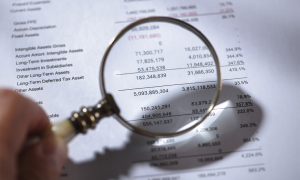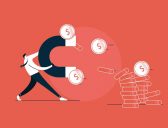One of the tools that can be used to assess the performance of your business or organization is a balance sheet. A balance sheet, which should be a part of the financial model in your business plan, categorizes your assets (everything you own), your liabilities (everything you owe) and your equity (the financial contributions made by all owners in the business). The cardinal rule for a balance sheet is that your total assets should equal the sum of your total liabilities and total equity (i.e., assets = liabilities + equity). If this equation isn’t true, then it’s because of an accounting error, not because your business is performing badly.
Balance sheets can be difficult to understand since a change in your assets almost always involves a change in either your liabilities or equity (or vice versa) in order for the equation above to remain true. While it would take more than an article to explain all of the intricacies involved in balancing a balance sheet, the following information will help you know what should be factored into your balance sheet and where.
Current and long-term assets
Assets fall into one of two categories: current assets or long-term assets. The following are some common examples of current assets.
Cash
Your cash is simply the money that you have in the bank or perhaps another location where it is readily available.
Accounts receivable
This one doesn’t apply to every business or organization, but accounts receivable is money owed to your business that has not yet been received. Your car insurance company probably sends your bill about one to two months before it is due. From the time the invoice is issued until the time the bill is paid, the amount of the bill would be an example of an account receivable to the insurance company.
Inventory
Your inventory is items that are used up as a direct result of fulfilling customer orders and that need to be replenished to continue fulfilling orders. A good rule of thumb is that your inventory should be synonymous with the cost of goods sold in your income statement — except that in your income statement, you’re factoring the amount of these goods used to generate the revenue you earned, whereas in the balance sheet, you’re factoring the total amount of these goods that you have on hand.
The assets mentioned above are considered “current assets” because your supply of them comes and goes, so the value of each can vary at any point in time. Many businesses also have long-term assets. The following are some examples of things that would go under long-term assets when applicable.
Furniture, fixtures and equipment
Furniture, fixtures and equipment (FFE) includes any tangible objects that your company has purchased that help the business make money but are not used up and replenished. Stoves and ovens would be good examples of equipment for a restaurant while chairs and desks would be good examples of furniture for an office.
Intellectual property
This doesn’t apply as often, especially for small businesses, but intellectual property involves intangible assets that often serve as legal protections for your ideas. Patents, copyrights and trademarks are prime examples of intellectual property.
Depreciation
Although not a cash expense, depreciation is factored into a balance sheet since long-term assets depreciate over time. For intellectual property, amortization is the appropriate term since such property doesn’t go down in value per se, but only provides protection for a specific period.
Current and long-term liabilities
Like assets, liabilities are grouped into current and long-term. Here are some examples of current liabilities.
Accounts payable
Accounts payable includes any non-outstanding monies your business owes but hasn’t yet paid. If you hire a professional cleaning company to clean your office in a given month and have not yet paid your bill (but are still within the date the bill is due), then the cost of the cleaning would be an example of an account payable. Accounts payable also includes recurring bills that are paid in full on a monthly basis but don’t involve paying off any outstanding debt over a long period of time. Phone bills and utility bills are good examples of accounts payable.
Current borrowing
Current borrowing isn’t as common, but if you have a line of credit for your business, then the cost of any purchases made in a given month would be considered current borrowing until you pay your credit card bill, assuming you pay it the next month.
The liabilities mentioned above are considered “current liabilities” because they will presumably be paid off and zero-balanced in the short-term. If a recurring bill, then it will presumably be paid the next month.
Long-term liabilities are debts taken out by your business that are repaid over a long period of time. A bank loan used to fund your business is a prime example of a long-term liability.
Equity
The following are examples of the equity expressed in the balance sheet.
Paid-in capital
Paid-in capital factors any financial contributions made by the owners into the business. These contributions are most commonly made when the business starts although cash injected into the business at a later date would also be factored here after the fact. It should be noted that if an owner withdraws any amount of this money at any point in time, then that amount would no longer be factored (the same amount would be depleted from the cash in your assets to balance).
Earnings
Earnings is basically your net profit (or loss) for the period in which your are reporting. So, if you if your balance sheet is for the year 2021, then your net profit for all of 2021 would be your earnings.
Retained earnings
While your earnings factor in your net profit for the current reporting period, your retained earnings factor in your accumulated net profit or loss from previous years. So, if you started in your business in 2021, your retained earnings for 2021 will be $0 since retained earnings are based on the previous reporting period. However, your 2021 earnings (i.e., your net profit as explained in the previous point) would be what you show in your 2022 balance sheet for your retained earnings. Then, you would add your net profit for 2022 to your retained earnings for 2022 (or subtract your net loss) to determine your retained earnings for 2023.
Balance sheets can be complicated, but once you understand what they factor in and how to read them, they can be beneficial for evaluating the health of your business.
The post Use a Balance Sheet to Evaluate the Health of Your Business appeared first on Entrepreneur
Original source: Entrepreneur






